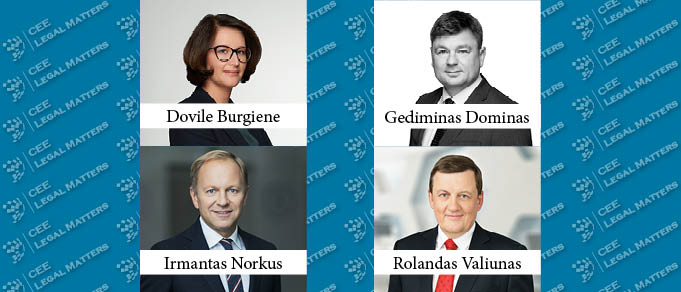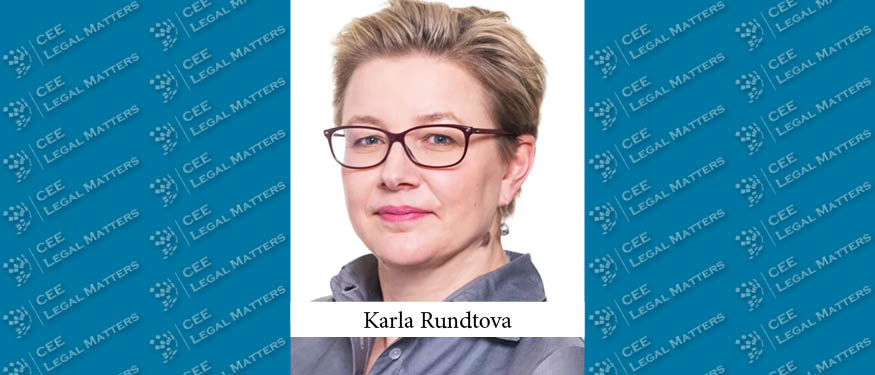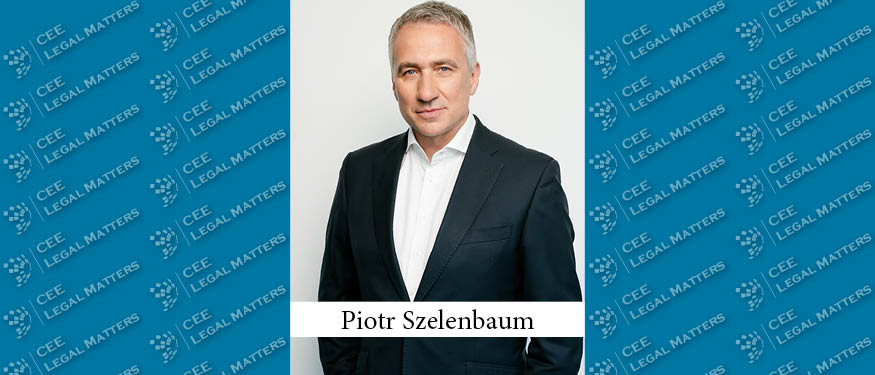Over many years, the Estonian, Latvian, and Lithuanian legal markets have been dominated by the same four firms, although the names they operate under have sometimes changed. At the very end of 2018, however, the market in Lithuania, the largest of the Baltic states, shook. when a large team split off from one of those four firms, and several months later merged with a leading independent firm in the country.
A year later, it is possible to evaluate the fallout and obtain some perspective on whether that split-off was a real earthquake that restructured the landscape of the region’s legal markets, or simply a tremor that left the fundamental dominance of those four champions unaffected.
Walless Comes Into Being
Although they have, at times, operated under different names (including Raidla Lejins & Norcous, Tark Grunte Sutkiene, and Lawin), and in at least one case literally exchanged teams, the same four firms – what are now Cobalt, Ellex, Sorainen, and TGS Baltic – have more or less dominated the three Baltic legal markets. Indeed, only these four firms – let’s call them, collectively, the “Historic Four” – are ranked as first tier by Legal 500 for Commercial, Corporate, and M&A in each of the three Baltic states, and these four firms have divvied up the CEE Legal Matters Deal of the Year Awards for the Baltics in both years of those awards’ existence. They are, if not necessarily the best firms in each country, at least the best known.
Nonetheless, in December of 2018, the status appeared to become less quo, as some 30 lawyers departed in one fell swoop from the Lithuanian office of Ellex – Ellex Valiunas – to start a new firm: Walless.
According to Walless’ Managing Partner Dovile Burgiene, the firm’s founders found themselves frustrated both by a lack of clarity about the path to equity at Ellex Valiunas, and, even more importantly, what they saw was an inability to influence the strategy and decision-making power of the firm. Burgiene emphasizes that these problems were hardly limited to her former employer. “The thing is,” she says, “many firms on the Baltic market just don’t have a clear partnership model – and we wanted to do this differently. The lack of clarity on the partnership model leads to situations where partners feel there is a miscalibration in terms of performance and payment.”
Indeed, Burgiene insists that she and her colleagues at Walless are committed to doing things differently, replacing what she perceived as a glass ceiling with a transparent structure that recognizes and rewards high achievers and sets very clear targets for the partners in a pure lockstep model. She insists that the ability of lawyers to practice in such a structure allows them to truly achieve, describing it as a “great opportunity in a lifetime of a lawyer.”
Still, the prospect of competing against the traditional market leaders was daunting; Burgiene laughs that she and her colleagues made a point of not thinking about the challenge. “Starting out, we could not know how quickly we would stabilize our business model,” she says, “but I think it helped us to just do our own thing and not think about difficulties.”
Sometime in the middle of last year, she says, confidence grew across the firm’s management that its model was working. Most of Ellex Valiunas’s Banking & Finance practice – eight of ten lawyers – had made the move, which Burgiene says made the transformation especially smooth. “This part of the business had no impact from the name change, [and kept] competing with all the larger firms for the same mandates as usual.” She insists that was true in other practices as well. “For all the other practices, it turned out to be similar – the market knows the partners as leading individuals, capable to do the same large and complex mandates as they were working under a different brand.”
Although Burgiene is reluctant to reveal Walless’ financial returns from its first year in operation, she reports that “what we can say with our deep knowledge of the market is that we have met the same KPIs of average turnover per fee earner and turnover per full equity partner as in our previous practice, and our profitability KPIs (operating margin and net margin) are better.” According to her, “this proves to us that our business model was built on the right assumptions, and we are now encouranged to further invest into maintaining top quality and strengthening our team.”
Despite their success, and although all of the Historic Four have offices in each Baltic country, Burgiene insists that Walless has no plan to enter into a pan-Baltic alliance anytime soon. “If we’re going to do something that big, we have to do it properly, and we just aren’t there yet. We do get a lot of interesting international projects, but we wouldn’t want to rush into an alliance just for the sake of being able to say we’re in one.” According to her, if Walless is eventually to consider a pan-Baltic presence, it would have to be one that has a real infrastructural presence, integration, built on aligned strategy, and “not just be a partnership or a cooperation scheme with another local firm.”
The Market Takes Note
It wasn’t only clients that took note of Walless’s success. After only a few months, on April 1, 2019, the Lithuanian office of the Levin law firm alliance, Dominas Levin, led by longtime Glimstedt Vilnius Managing Partner Gediminas Dominas, decided to join Walless as well.
“They were very motivated, very ambitious, but mostly very, very spirited and driven,” Dominas remembers thinking of the Walless team. “This mentality of always improving and going for being number one is what got my attention the most, aside from them having all the requisite capabilities of a strong firm and personnel with a proven record.” According to Dominas, who now heads Walless’s International Arbitration and Litigation practice, that core team is “experienced but still hungry,” and it remains highly motivated to succeed. “There are about 50 or so lawyers now in our ranks, and they’re all working towards the same goal of being better – day in and day out.”
And indeed, the traditional market leaders paid close attention to Walless’ creation as well. “This was the largest spin-off we’ve ever had in Lithuania, since we’ve had a legal market,” says Cobalt Managing Partner Irmantas Norkus. “And it’s not only about the numbers – these were seasoned experts in banking & finance, tax, real estate … all of this makes Walless a strong contender in Lithuania.” He believes that the spin-off reflects a generational shift, with “younger lawyers not being satisfied with the status quo and deciding to make their own future.”
Still, Norkus insists that he welcomes the new competitors. And perhaps “new” isn’t quite the right adjective anyway. “These are all established specialists and experts,” he points out. “Not some college grads rushing into it. The people in Walless have a lot of experience – they’re just organized under a different banner – which is why we choose not to ignore them.”
Norkus suggests that the Historic Four would be well-advised to consider the significance of Walless’s departure, understanding what the next generation of high-achieving lawyers is looking for. For its part, he says, Cobalt has taken an err-on-the-side-of-caution approach. “Reacting to what’s going on, we increased our partnership from 10 to 17 over the past two years. We decided to expand and integrate young, next-gen partners.” He also points with pride to the fact that Cobalt didn’t lose any of its lawyers in the past year, which he takes to mean that that the lawyers at the firm are satisfied with its current structure.
Ellex 2.0
While Cobalt, Sorainen, and TGS Baltic had the opportunity to observe Walless’ departure from the sidelines, Ellex wasn’t so lucky.
Ellex Valiunas Managing Partner Rolandas Valiunas concedes that the abrupt departure of almost all of the firm’s Banking & Finance group and significant parts of the firm’s Tax and Real Estate practices represented a major wake-up call. “Speaking of the time around December of 2018,” he admits, “I can honestly say that they weren’t the most enjoyable months of my professional career.” The firm had to move quickly to respond. “We had to cope and move on while keeping our professionalism and level of service intact,” Valiunas recalls, “so we turned to changing things internally, to crafting a more productive corporate culture.”
This proved the right approach, Valiunas says, noting that the firm’s rebuilt Banking & Finance group is larger now than it was before the separation and is “working over our capacity on some of the biggest projects in the banking sector.” He reports similar success in the M&A and litigation practices as well.
“A strong culture, that’s what made this possible,” Valiunas says. “We used the dissipation to make changes within, to consolidate the opinions of all the partners, and make amendments to our remuneration system to get people motivated.”
Valiunas describes this new approach as “Ellex 2.0,” and he describes the three pillars of the firm’s new culture. “First, he says, “we started focusing all of our competitiveness on the outside, trying to get our folks to cooperate more, to get them incentivized to offer help cross-teams, not just within one practice.” Second, Valiunas says, the firm changed its remuneration system to provide a more balanced approach to profit-sharing. “Third, we introduced more measures to have people be able to meet each other – the firm is huge, and sometimes folks would go for weeks on end without running into one another.” All that, he says, allowed Ellex Valiunas to weather the storm relatively undamaged: he claims that Ellex Valiunas completed more deals last year than any other firm in Eastern Europe.
Too Much Is Never Enough?
The Baltic legal markets, outsiders are inevitably reminded, are extremely small – even combined, the Baltic states’ nominal GDP is half that of the Czech Republic. The legal market in each of the countries is, consequently, significantly smaller than most of its CEE neighbors.
“I’ve always had a belief that market laws and logic mean these markets can only support firms of a certain size,” says Gediminas Dominas, who believes that, as a result, some of the larger firms may have outgrown their ability to keep all their lawyers busy and profitable. “I don’t think that these firms have anything wrong with them per se,” he says. “It’s just that, being that big, market conditions will force them to be ripped apart.” As a result, he says, the growing number of young lawyers starting to reach their full potential will make the generational change felt more strongly – so that what happened to Ellex “could happen elsewhere too.”
Burgiene agrees with her colleague that some firms are simply too big. “Personally, from experience, I know that any law firm with over 40 lawyers in one office is a big firm in our small markets – and if a team has over 70 people, then I fear that it cannot be utilized effectively.” She feels that it is very difficult to “utilize profitably a large team capacity due to the limited amount of work in the market in some specialized practice areas, a limited number of truly large M&A deals, and the conflicts of interests that a team that large inevitably finds itself in.”
Nonetheless, Burgiene waves away the idea that the other big firms are in any danger, suggesting that it is in fact the smaller firms that are facing the real threat. “Legal spending grows as does the GDP of our economies. This work is then distributed between all of the tiers on the market, and larger firms maintain and grow their market share by hiring and developing practitioners from smaller generalist firms or merging with smaller specialist firms. So it is more likely that the number and size of the big players will increase over time, provided, of course, that they can get their partnership model right.”
Unsurprisingly, the managing partners at the traditional market leaders also reject any suggestion that their model is flawed. Irmantas Norkus points out that the Historic Four are “very far ahead, at least for the time being,” and he says that, ultimately, “cracking into the big four is a tall order.” Ultimately, he believes, a pan-Baltic presence is necessary to compete even in one of the markets. Thus, he praises Walless as being an excellent example of a “one-country strong showing,” but says that “they run a tight ship, but still cannot compete Baltics-wide.”
Rolandas Valiunas also believes that Historic Four are likely to remain on top going forward. “I’d say that three or four firms are completely enough to handle the market. There are other firms having good partners and lawyers – I mean, if somebody leaves Ellex they still have the same experience and competence,” he adds, smiling, “but no more firms are needed. I feel we have enough experts for our current market size.”
It may be that there simply hasn’t been enough time to determine the ultimate significance of Walless. Will it, eventually, turn into a permanent and prominent member of the top tier of Baltic law firms, or or will it settle into a successful and stable member of the next tier – widely-known and respected, but only occasionally competing for top mandates? Only time will tell. In other words: Watch This Space.
This Article was originally published in Issue 7.2 of the CEE Legal Matters Magazine. If you would like to receive a hard copy of the magazine, you can subscribe here.

















